Honor Magicbook 14 Notebook Review: Where Style Paints a Picasso
by Dr. Ian Cutress on May 15, 2020 9:00 AM EST- Posted in
- Laptops
- AMD
- Notebooks
- Zen
- honor
- Picasso
- MagicBook
- Magicbook 14
- Ryzen 5 3500U
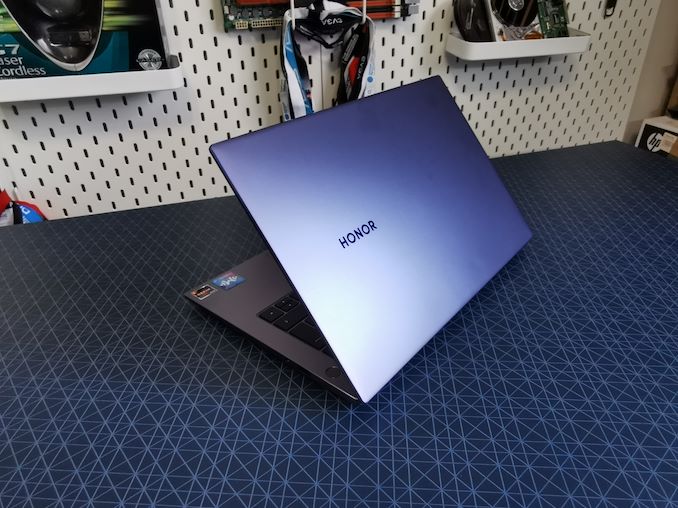
There are three major selling factors when it comes to laptops: Specifications, Price, and Style. It is exceedingly rare to have a laptop hit all three, and if often takes a flagship device to score high marks on all three. The first two, specifications and price, often go hand in hand, but one aspect that often gets overlooked in the mid-range is the element of Style.
The Honor Magicbook 14 notebook, which is the subject of this review, scores remarkably high marks for style. Honor, and its parent company Huawei, are primarily in the smartphone business when it comes to consumer products, but over the past couple of years, they have both made efforts to enter the notebook market. With that they bring the sense of style that has governed their smartphone designs to become the second biggest seller in the world. Regardless of what may be happening on a political level, Smartphones from Huawei and Honor are very well received for their ability to capture the eye in a way that other devices do not, and it is this style that Honor brings to its new Magicbook line.
This covers not only the polished metal chassis, the easy-to-use keyboard and trackpad, the thin-bezel display, but the edges of our space grey Magicbook are lined with a stellar azure blue like I have never really seen on a notebook before. It is a marque which brings to mind the HP Spectre notebooks in black and gold – except where those devices are north of $1500 apiece, the Honor Magicbook is nearer $550 (currently £550 in the UK including sales tax). The Magicbook is an ultrathin device but keeps costs down by not going completely space-age in its material choice. The 14-inch form factor and the weight at almost exactly 3 lbs makes for a sleek lightweight travel machine.
Under the hood is an AMD design, with Honor choosing the Picasso-based Ryzen 5 3500U quad-core processor in cTDP down mode. I can predict that the first comment from a number of our technical users is going to be that this processor is the previous generation, based on AMD’s Zen+ design, while the company has recently launched Renoir-based Zen2 into its portfolio for these sorts of devices. Given that this is Honor’s first notebook into the international market, and how the timeframe lined up, the company went down the safer route to begin with, in order to learn the AMD platform, and hopefully offer a Renoir-based design in the future.
For specifications, the Honor Magicbook 14 has a 14-inch 1920x1080 LCD display, with ours peaking in brightness around 240 nits and while the initial calibration was not great, we did get a really nice calibration profile with our equipment. The display has a ~5mm bezel around the edge, reminiscent of other company’s ‘Infinity’ like displays. In order to enable a thin bezel at the top, the webcam has been moved to into the keyboard, similar to the Huawei Matebook notebooks. The display is not touchscreen, but it can rotate back to a 178-degree horizontal mode.
In our unit we have the Ryzen 5 3500U processor, which as I mentioned is actually at a slightly lower power setting than the 15 W standard, likely to balance performance and battery life (more on those later). There are Ryzen 7 3700U models, however we understand that those are for China only. This system has 8 GB of DDR4-2400 in dual channel mode, and storage options are 256 GB for the Ryzen 5 and 512 GB for the Ryzen 7. The storage drives are actually very nice, with Samsung NVMe units inside the system – there’s no mechanical spinning rust here.
The battery capacity is 56 Wh, which Honor rates for 9-10 hours in video/web/office type workloads at 150 nits (we got 7h at 200 nits in our web test). The battery supports 65 W fast charging with any suitable Huawei or Honor charging adaptor, with a claim of charging from 0 to 48-53% within 30 minutes. For a Zen+ based 14-inch notebook, those are some really nice numbers.
The keyboard is an attempt to copy Apple’s chiclet design. I am not that much of a fan of these sorts of keyboards, due to the limited about of tactile feedback, but the keyboard on the Magicbook is one of the nicer ones I have tested in recent memory. Perhaps just because I am using the UK version, but I am glad I have a tall enter key! Unfortunately, there is not a right click key that I’m increasingly becoming accustomed to.
The power button is located as a separate button to the right of the delete key, but it requires a proper press in order to activate. Inside this is a Goodix fingerprint sensor, likely identical to the ones that Honor uses on their smartphones – out of most of the fingerprint sensors I’ve used, I often find that the Honor/Huawei implementation of Goodix models to be some of the best and most accurate. The trackpad is super large below the keyboard, capable of ignoring false touches while typing. A number of notebooks in this price range often have dodgy trackpads, but this one is extremely accurate and responsive, and as much as I hate touch tapping, it takes a good amount on this trackpad so I’m very happy with it.
For connectivity, the notebook has a full-sized HDMI port, a USB 2.0 port, a USB 3.0 port, a 3.5mm jack, and a USB-C/charge port. Nothing too extravagant here.
Under the hood there is not too much to see. The 56 Wh battery takes up most of the space on the bottom of the device, sandwiched between the bottom facing speakers. The AMD Ryzen APU is located under a heatsink connected via a heatpipe to a thin fan blower, which exhausts the air out of the rear of the notebook towards the display hinge. The DRAM in this system isn’t replaceable, but the NVMe drive is.
For wireless connectivity, we get a Realtek 8822CE 802.11ac (Wi-Fi 5) controller, which supports a 2x2 connection with MU-MIMO and Bluetooth 4.2. There is also an NFC antenna next to the trackpad, which is used for Honor’s Magic-link application to easily share photos and videos between a smartphone and a laptop.
The model as tested in this review today is currently available at retail for £550 in the UK (including sales tax), which would make it around $560 in US prices pre-tax.
As part of our testing, we have run a few benchmarks and tests on the next few pages.


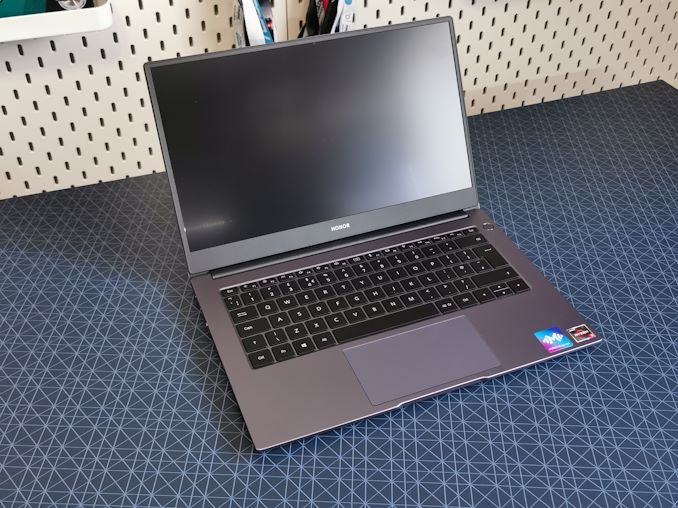

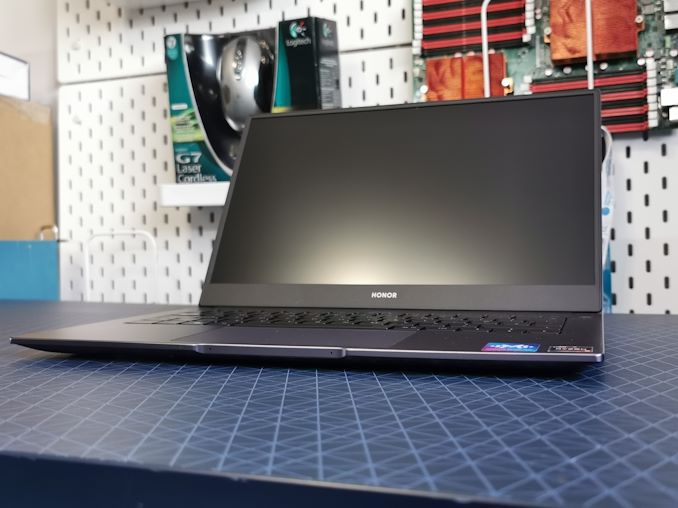
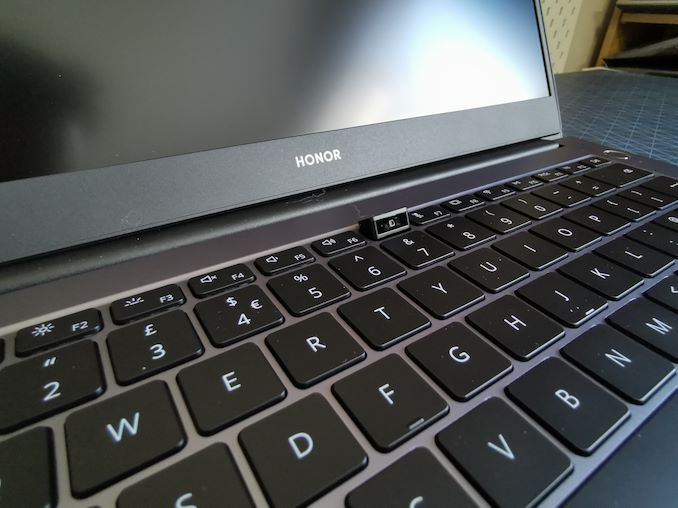
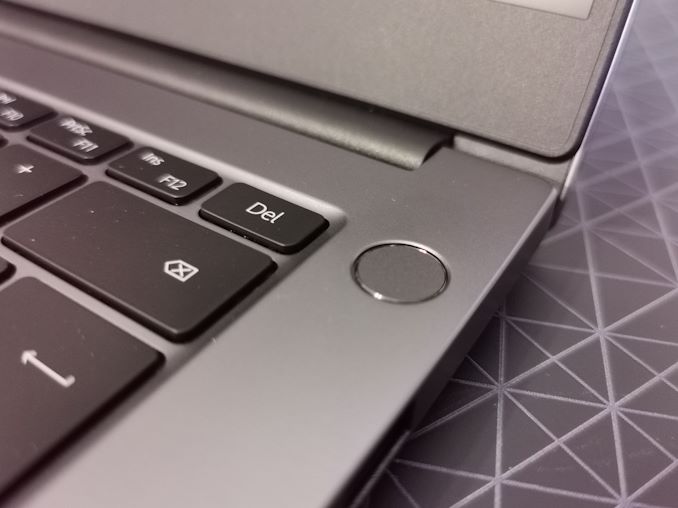


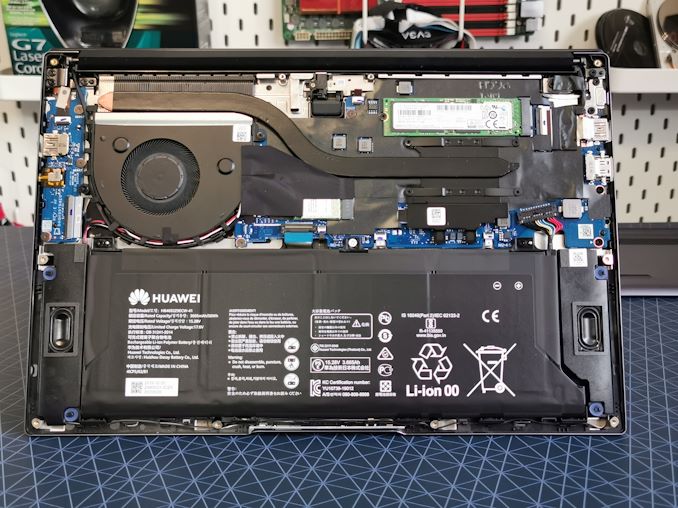


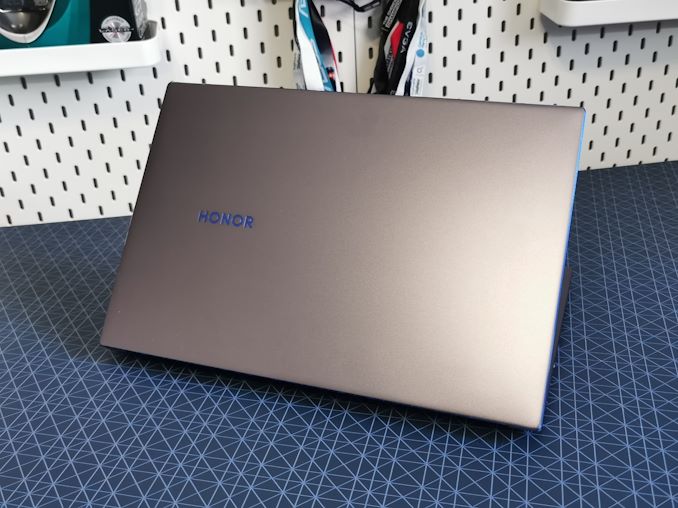








88 Comments
View All Comments
Jedibeeftrix - Friday, May 15, 2020 - link
"One of the best designs I ever had was the Huawei Matebook 13 (2017) model"Dear god, yes!
4800U / 16GB dual channel / 256GB nvme = sold
R3MF - Saturday, May 23, 2020 - link
Who knew!Huewieieiei have silently released an AMD flavoured Matebook 13 after all:
https://consumer.huawei.com/uk/laptops/matebook-13...
3500U, but here's hoping for a 4800U version...
nicolaim - Friday, May 15, 2020 - link
I don't want to complain too much about an inexpensive laptop, but that 16:9 LCD with the massive bezel underneath is just awful. The location of the webcam is a disaster. Lastly, 2020 is not the time to release a laptop with a bunch of USB-A ports...zentwo - Friday, May 15, 2020 - link
The bezel at the bottom is there so that the screen is not too low; also see the many complaints on the new Dell XPS 13 16:10 screen that got rid of that underneath bezel. And I use many USB-A devices in 2020. I agree with your opinion on the webcam location.jabber - Friday, May 15, 2020 - link
Yeah I'd rather have all USB A than anything else. Got no use for C right now or the forseeable future.bigboxes - Friday, May 15, 2020 - link
Maybe 5 years ago. Time for all type c. You get a dongle and the rest of get one cable.jabber - Saturday, May 16, 2020 - link
Dongles? Why, bother when I can plug my USB A drive straight in?Like folks that say these ultra slim laptops with like one port that are great cos you can plug them into these Thunderbolt dockers to get all the ports you need at your desk. Thing is back in the day you could plug a laptop into a docker and have the ports. Then if you unplugged it...the laptop still had most of those ports. Is this really going forward?
bigboxes - Sunday, May 17, 2020 - link
Type A ports need to go away. When there is no type A ports for you to connect your peripherals to you'll either need to purchase a dongle or new peripherals.Lord of the Bored - Sunday, May 17, 2020 - link
That is exactly why type-a ports DON'T need to go away. "Because the new connector is prettier" is a terrible reason to break compatibilty.RSAUser - Monday, May 18, 2020 - link
But why should I have to carry a dongle around? That seems backwards to me.Only USB peripherals I use are a mouse and keyboard, both USB type A, rest is display port monitors.